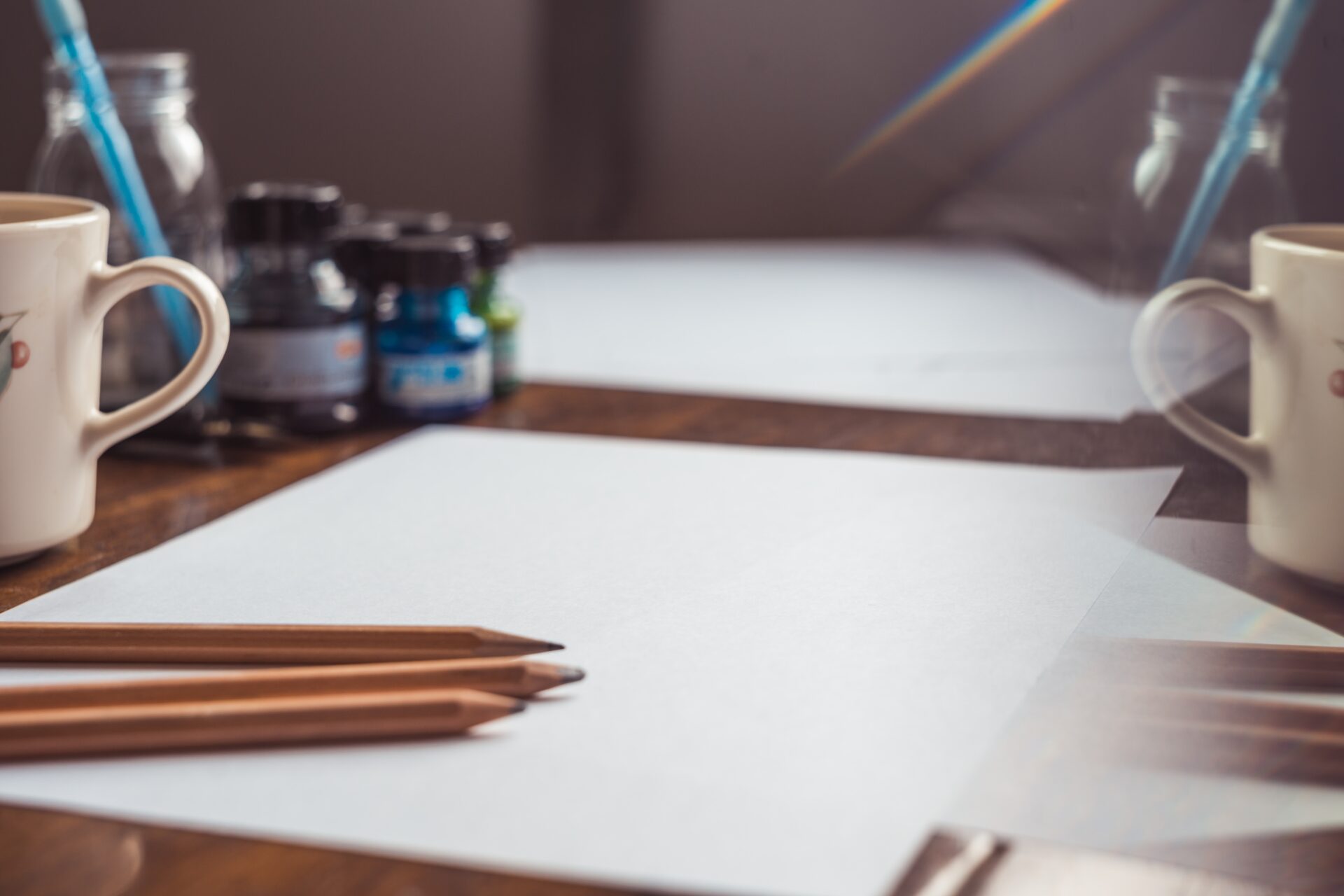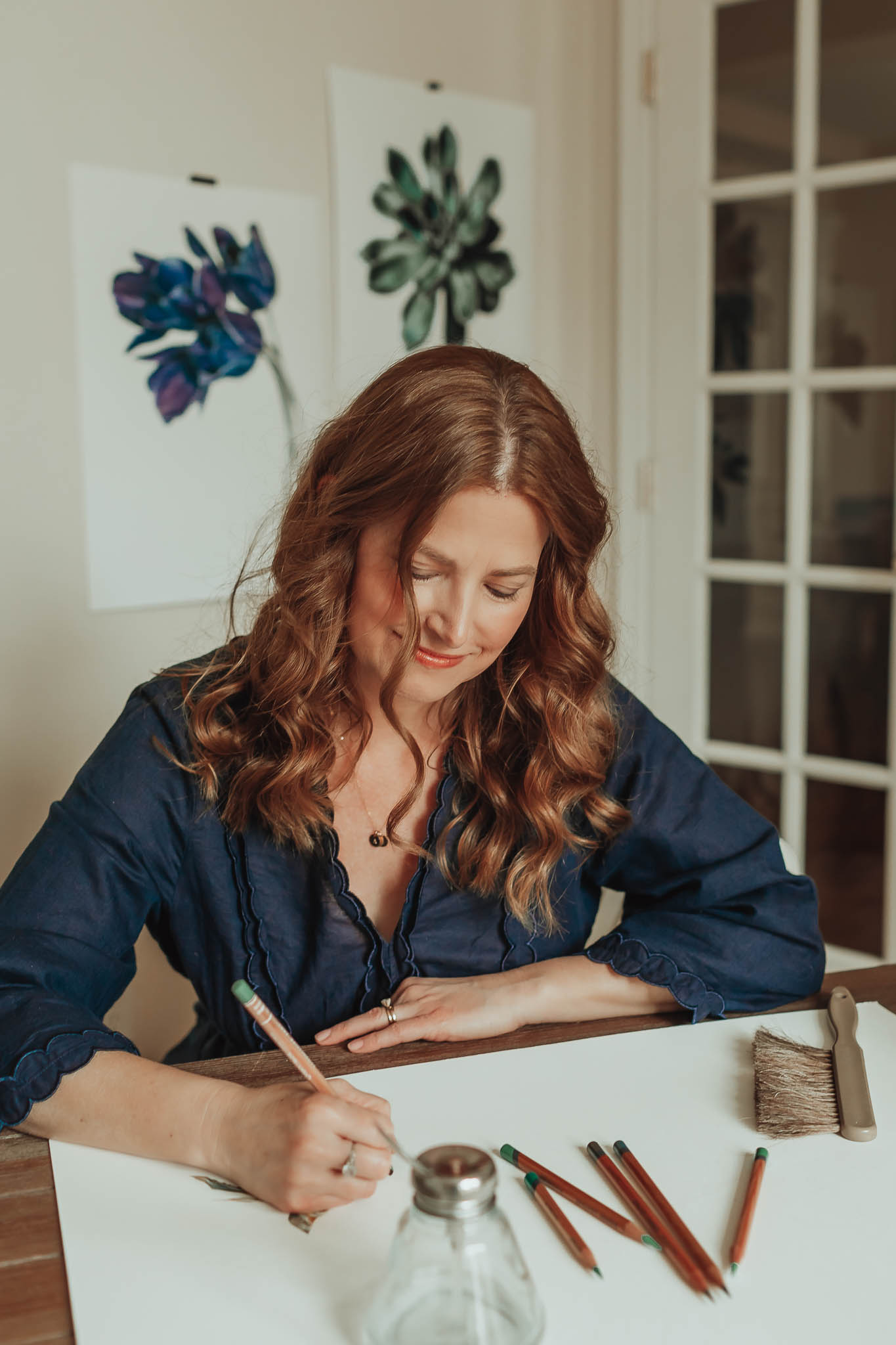Where to Start
Colored Pencil Drawing Tips
Alright, you have an amazing reference image that you are super excited to draw. You have created an outline of your reference on your best drawing paper. You have created color swatches and chosen your colors- or at least narrowed down your colors. And you find yourself staring at your drawing thinking ‘now what?’

This is the #1 thing I struggled with as a Beginner
To move forward, I would tell myself- you just need to start! So, I would jump in and immediately make a huge mistake, rip it up and start over.
What helped
Video Tutorials!!!!
By watching video tutorials online, I could see what the other artists did and mimic that perfectly. Even though I still had NO understanding of WHY they were starting where they did, I just did it anyway. I followed along. And, over time, it all started to make sense. Over even more time and many hours of practice, I started to develop my own process that was slightly different than any of the artists I had learned from. My process became a blend of techniques that I learned from others and discovered myself through trial and error.
This will happen for you, too! It just takes time.
In this article, I will give you some tips for getting started and a review of my personal process.
Here are a few general tips
2. Really study the reference image. When I am first drawn to a reference, it tends to be because it is stunning! It catches my eye in some way. And I am seeing the overall impact of the image. When I am preparing to draw it, however, I have to start looking at it completely differently. I have to notice things like
-
- The Background: Do I want to draw it with a background or leave it on white?
- The Focal Point: What about this drawing needs to really stand out?
- The Details: Which details will I draw and which could be left off?
3. Ask yourself, what parts of this drawing are going to be hard for me? For example, if there are stamens on a flower, do you know how to draw them? What will your approach be for getting those tiny stems surrounded by flowers? If there are highlights, how will you capture them? Practice these things on a scrap paper before you attempt them on your drawing or find a tutorial that will show you how I (or another artist) approached something similar.
4. Create a color palette. Creating a color palette saves so much time and gives you a sense of direction. I resisted doing this for years. I would instead focus on ‘color matching’. Here is the difference as it makes sense to me.
-
- Color Palette: When you create a color palette, you choose a set of colors to work with that includes shadows, mid-tones, and highlights. You try to get as close to your reference as you can within reason. When you look at these colors together on your swatch, they look great. Then you know that they will look great on your drawing. When you are ready to draw a shadow, you aren’t trying to match the color perfectly. You just use the shadow color you have chosen.
- Color Matching: When you are color matching or approaching each new tiny area of your drawing by trying to pick the perfect color for that area, it can bog you down and cause you to lose site of the overall drawing. I worked this way for years and I would struggle to find the perfect color match for a tiny section of my drawing that didn’t even have any significance. I wasted a lot of time and my drawings did not look any better for it.
5. Start with something easy. I will often say, “start with what you know for sure”. Is there any area on the drawing that is just a simple solid color that you can block in to get you moving? You can start there and then work your way out.
6. Check if there is any base work that needs to be done before you get started. Do you need to indent the paper for veins or details? Do you need to add a protective layer of white for a highlight? It is hard to go back and do these things after you already have a layer of pigment down.
7. Are you a background first or subject first person? I like to draw my subject first and then add my background later. Many artists do the reverse. My logic is that the subject is the most difficult part. I like to work on that while I am still in love with the piece and I have a lot of energy and focus. The background is easy and I save that as a reward for all of the work I have put into the rest of the drawing. Also, I don’t want to spend hours on the background and then make a mistake on the drawing. I’m pretty sure I won’t make a mistake on the background.

My process
Here is my process:
- Pick a reference image
- Edit the reference image
- Decide what paper I will draw on
- Create an outline
- Choose a color palette
- Prepare my supplies- sharpen pencils, lay out solvent, erasers, palette, etc
- Decide what area to draw first. If it is a flower on a stem with leaves, will I start with the flower, the leaves or the stem.
- Narrow that area down even further. If I am starting on a flower, will I draw the stamens, the center or the petals? If it is the petals, which will I work on first?
- Break it down even further. I am focused now on a single petal.
- Outline
- Indent the paper or block in the highlights as needed
- Block in the shadows- When I say ‘block in’ I mean to start the process, and hold the place by putting a shadow color in the shadow area. Nothing about it has to be perfect at this point.
- Block in the mid-tones
- Blend with solvent
- Darken the shadows as needed
- Brighten the highlights as needed
- Adjust the midtones
- Add details
10. Move on to the next element

